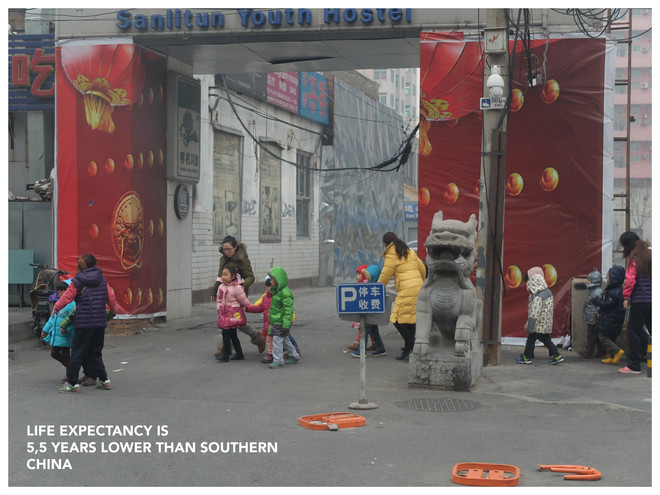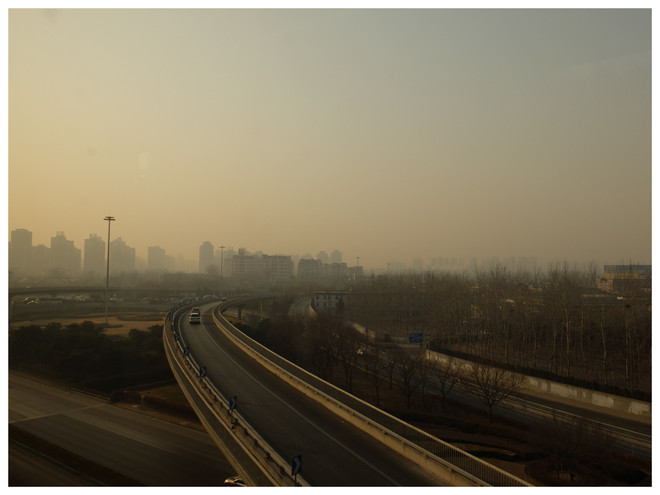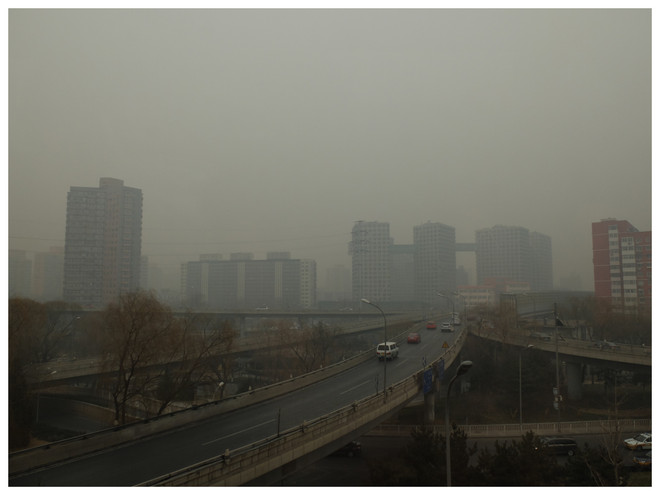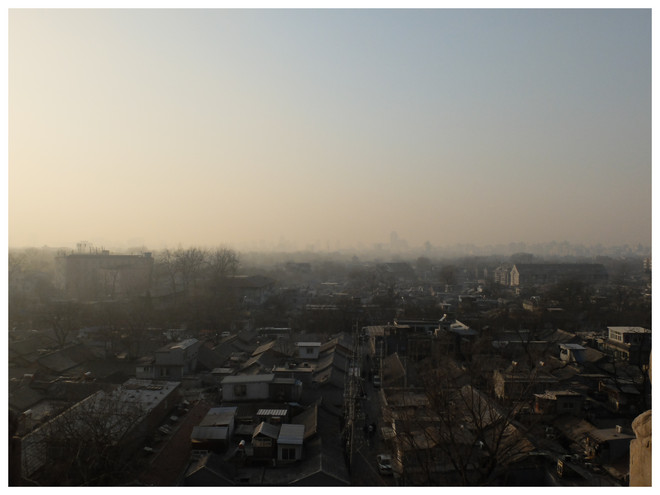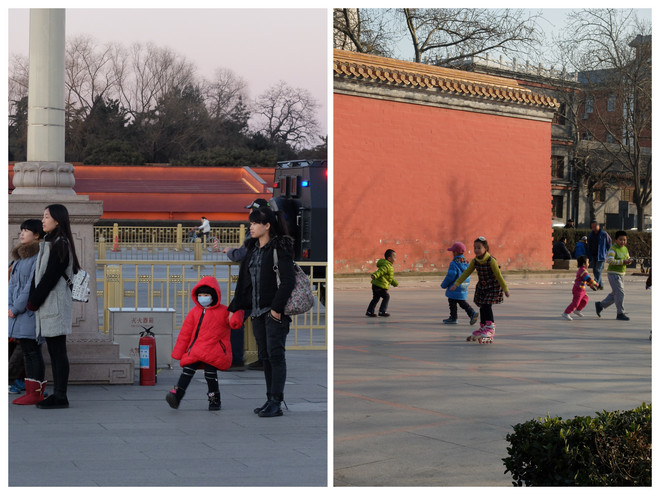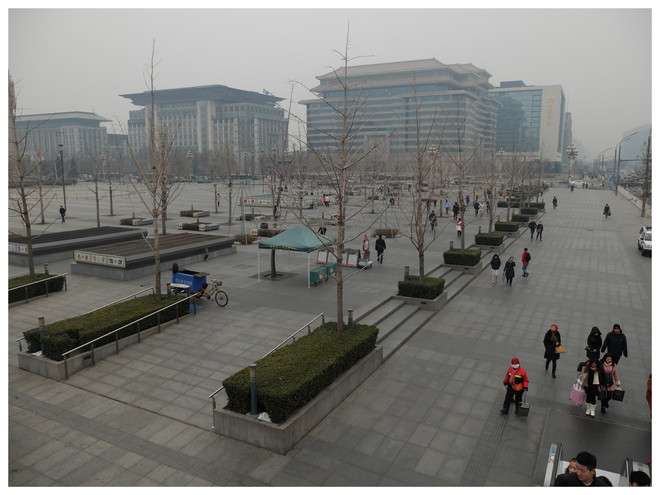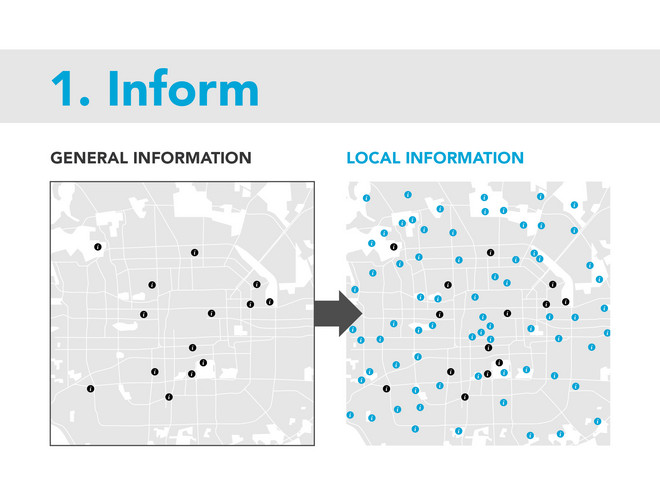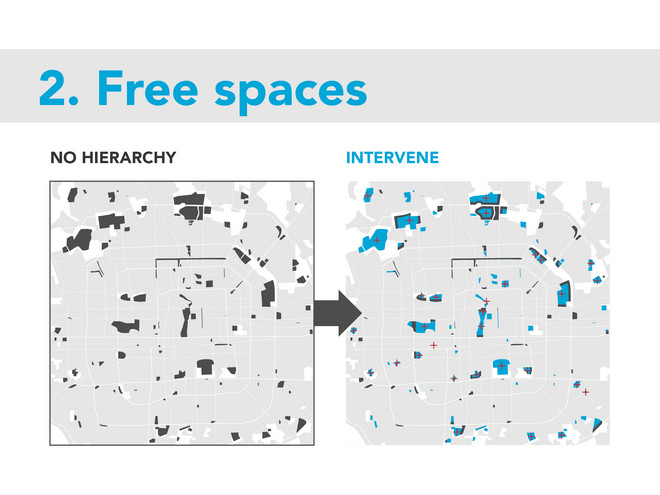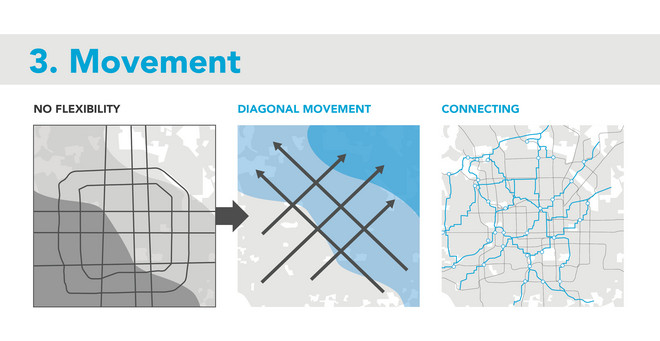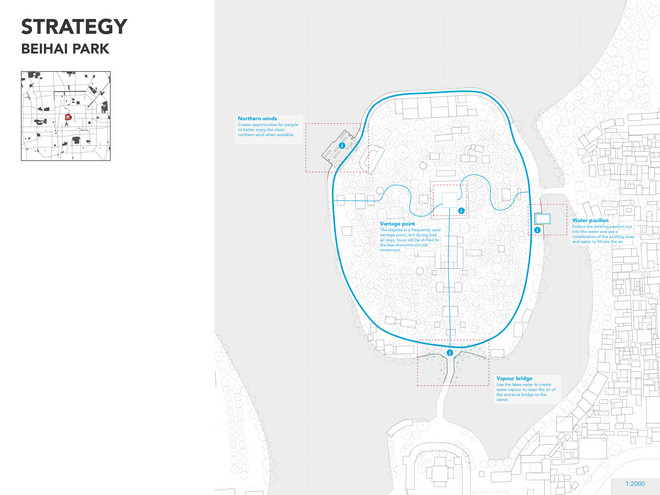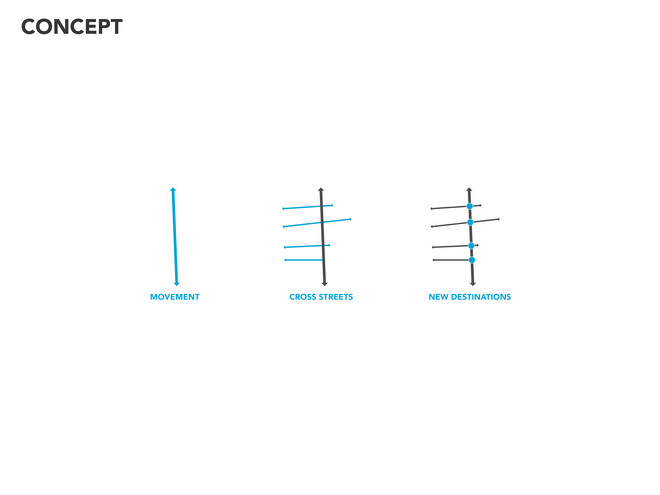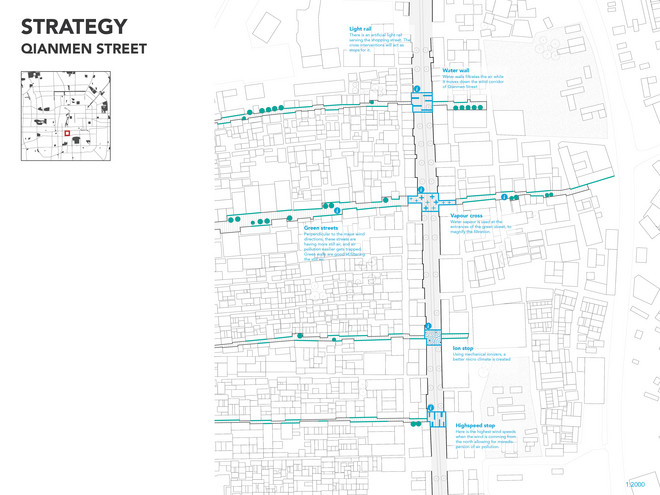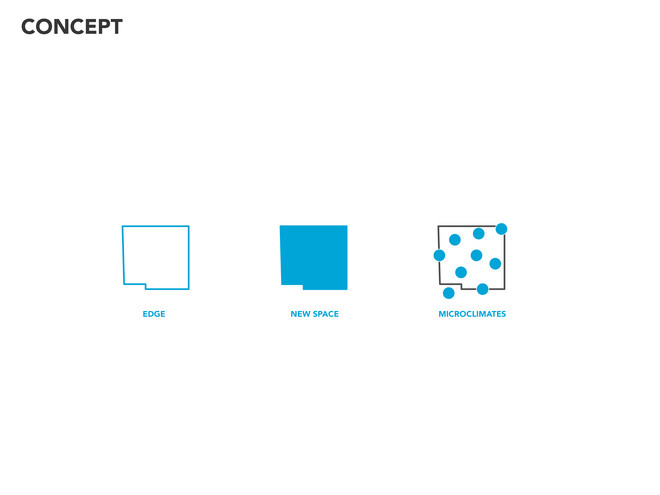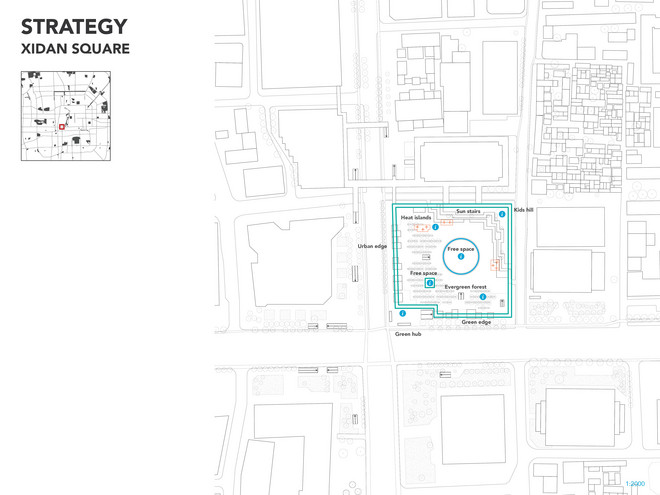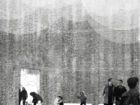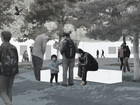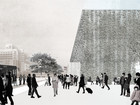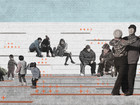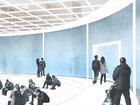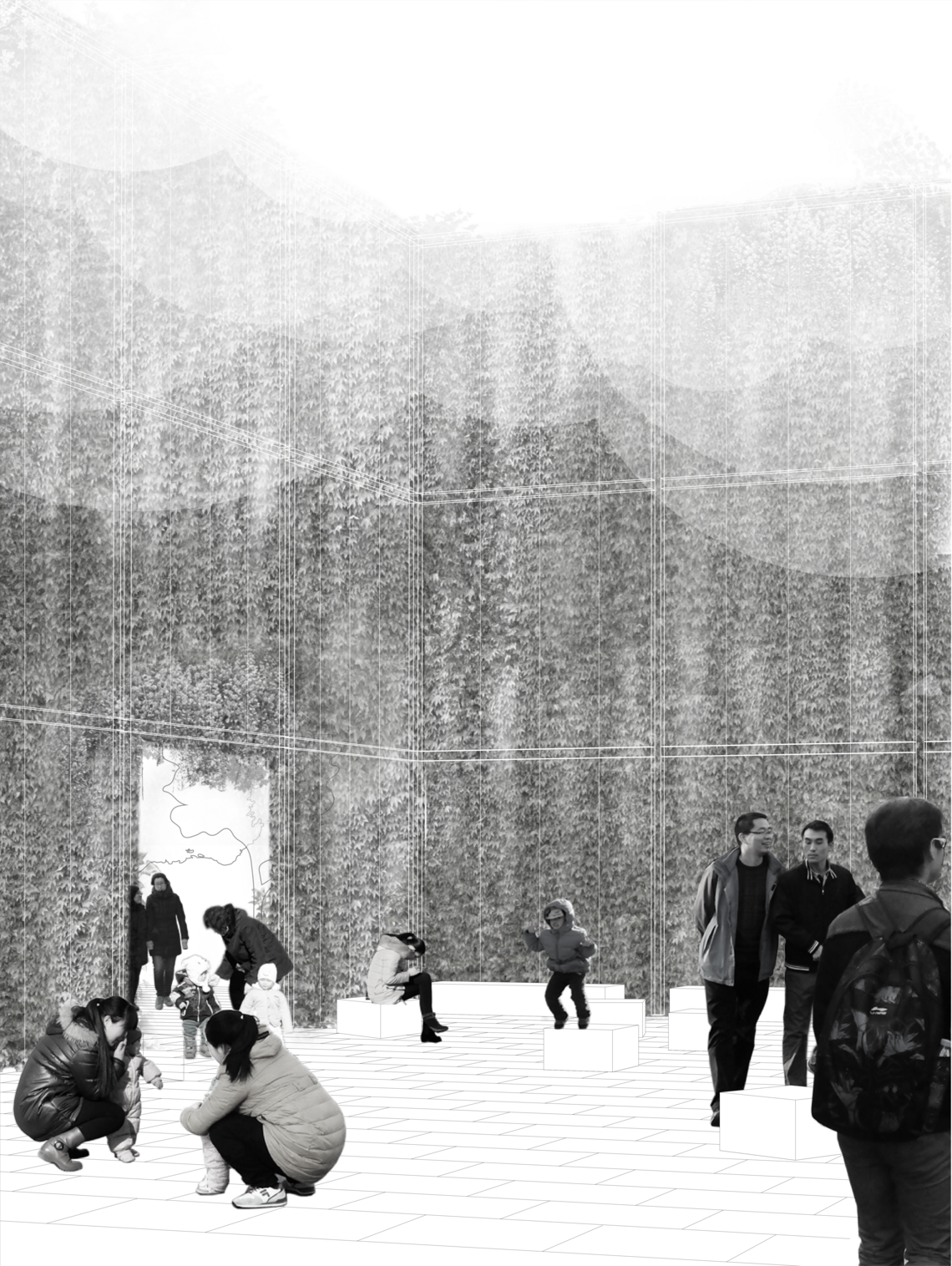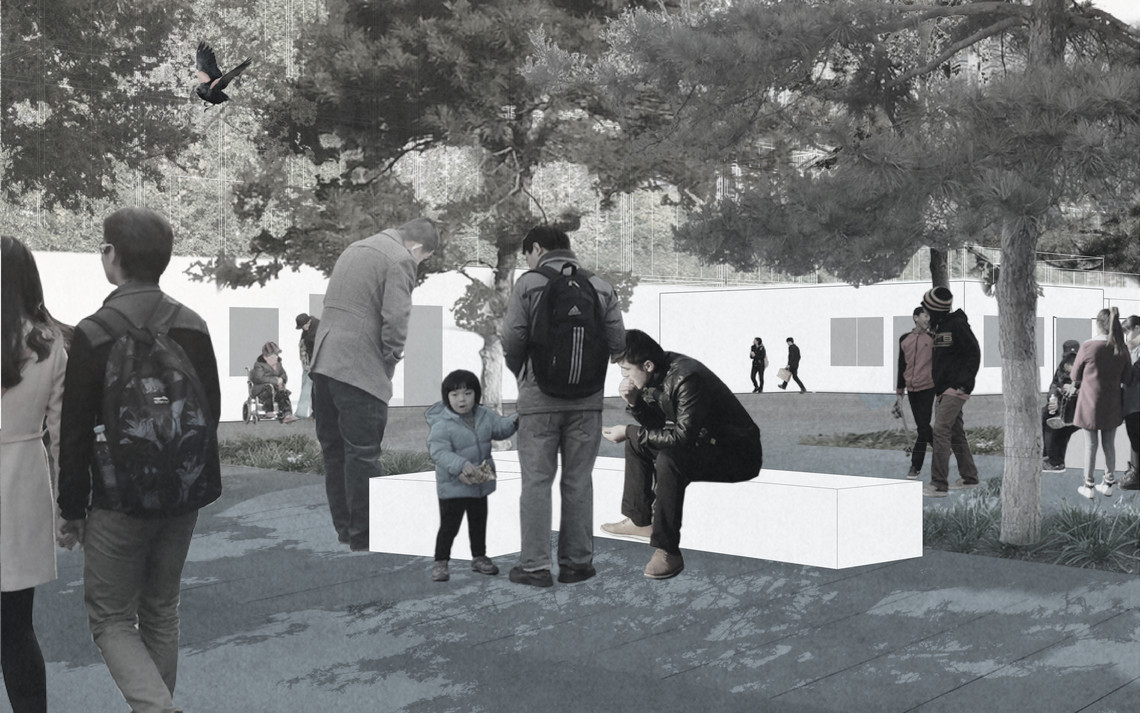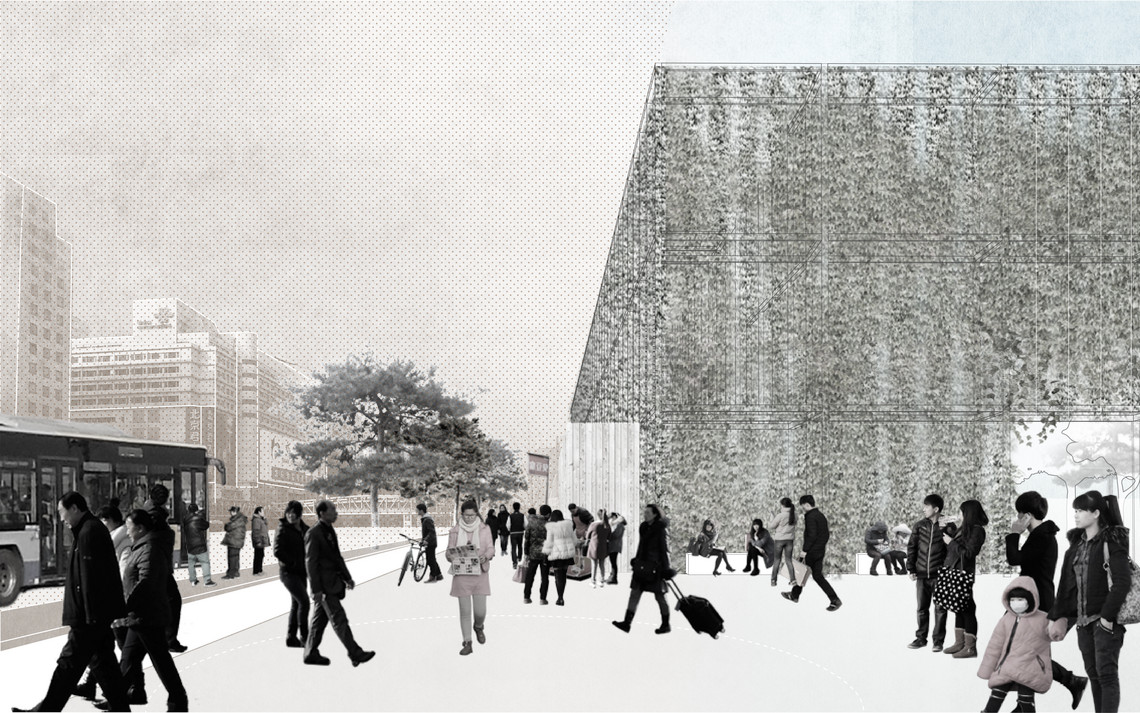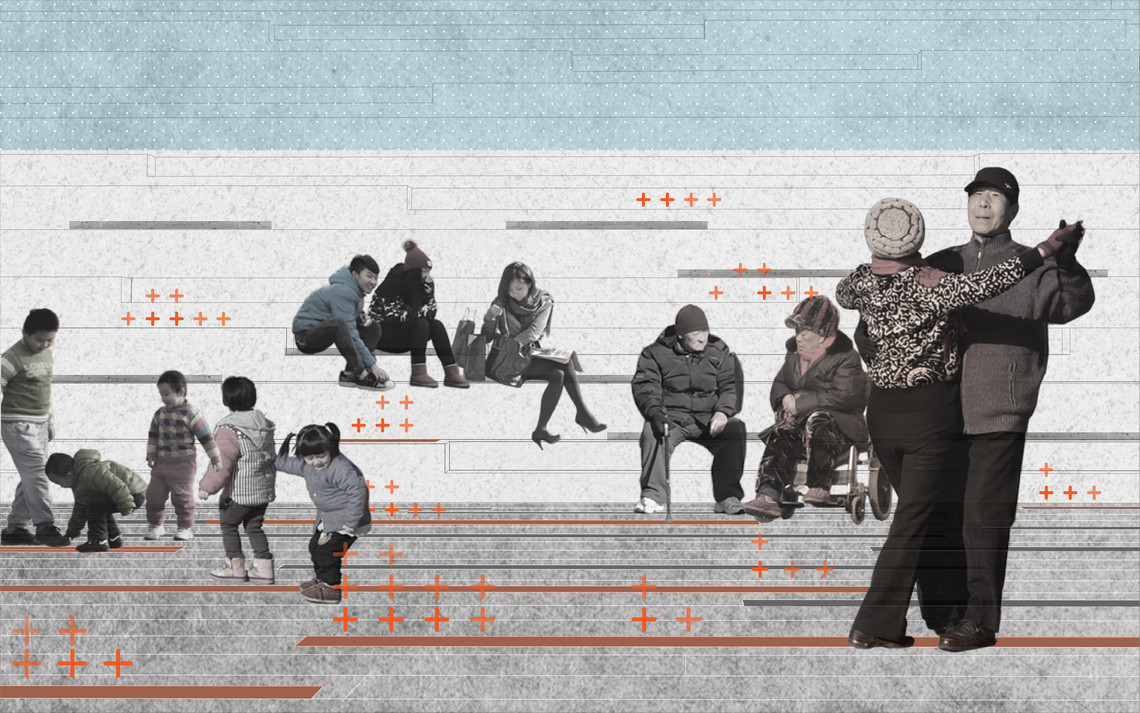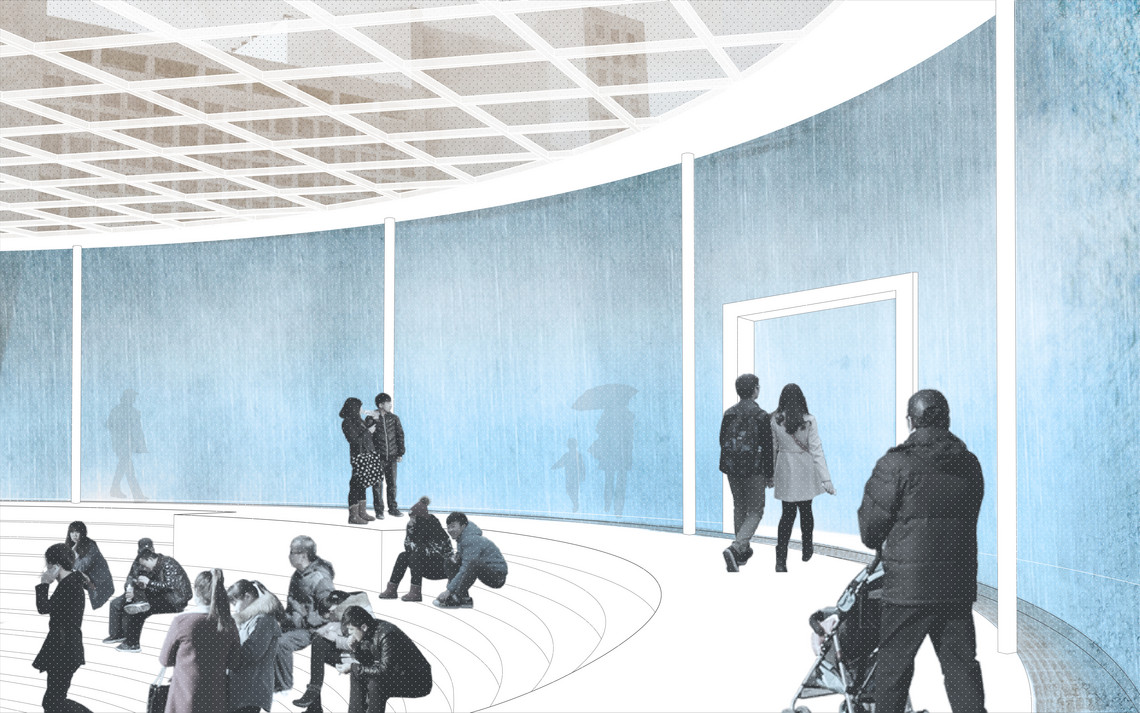
Urban air pollution - Consequences to the public spaces in Beijing
More than 300 million Chinese are living in areas with unhealthy air pollution levels. Most of these are living in cities. WHO estimate that around 500.000 Chinese die every year due to outdoor air pollution alone, and a recent study showed that lifespan in northern China is 5,5 years shorter than that of the south, mainly because of air pollution. Beijing is one of those cities severely affected by air pollution and notoriously infamous for it. The last couple of years have seen several instances of air pollution of almost catastrophic proportions.People who can afford it is seeking refugee in their hermetically sealed and air purified apartments or malls with their artificial climates. But where does this leave the outdoor space of the city?
The purpose of this project is to investigate how to reclaim the public space. This is done by first making an overall strategy for the city on how to improve the use of its public spaces, then move closer to the problem by identifying which means can be used to locally improve air quality in the different public space typologies.
I then looked more detailed into how the Xidan Square could be improved by using different methods for improving the air quality or options for outdoor stay at the square. This 25.000 sq/m square is an important public space, highly challenged by nearby major roads and bad planning.
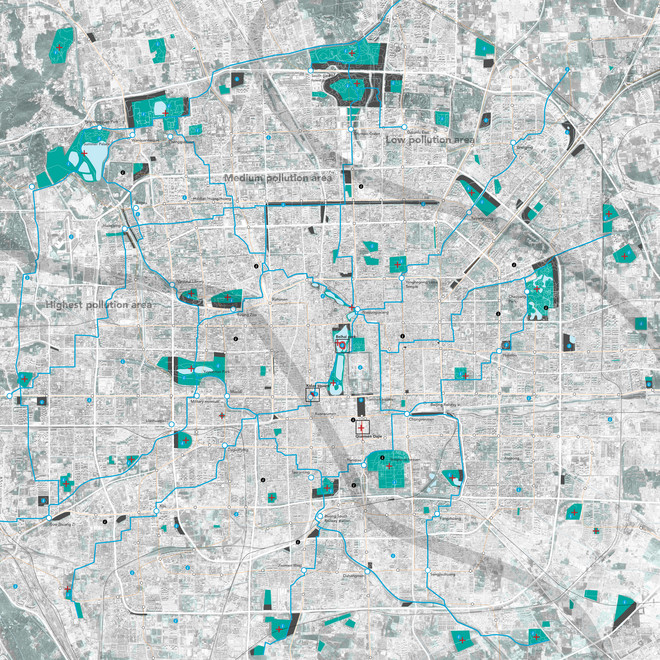
The urban strategic part of this project focus on how to start optimizing the use of the outdoor space. This is done by three main strategies.
INFORM - Information is crucial when working with air pollution, and start gathering data more local is necessary. Studies show that the air pollution can differentiate with more than a 100% within few kilometers.
FREE SPACES - Start upgrading the outdoor public spaces so they are better capable of dealing with the heavily air polluted context.
MOVEMENT - Creating better possibilities for moving across the city, especially diagonally. This is done with bicycle routes connected to the public transport, through green hubs.
Looking at the different typologies of public spaces in scale 1:2000 and what tools can be used to improve the air quality in these spaces.
The Xidan Square prototype focus on how you actually can start improving the air quality and use of this public space. This is done by using the previously developed toolbox in combination with the site specific air quality improving opportunities.

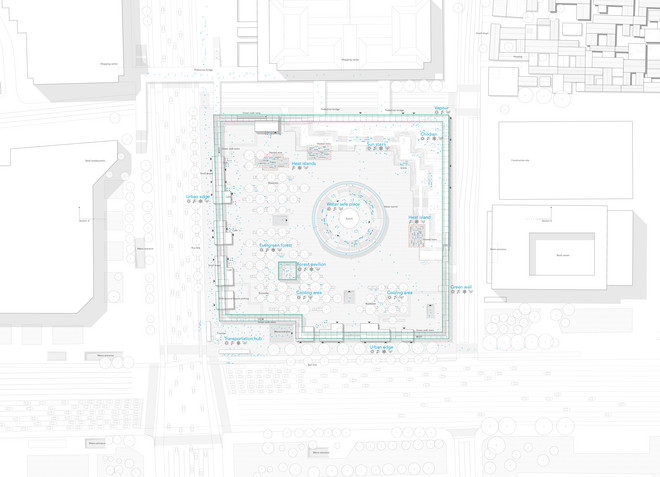
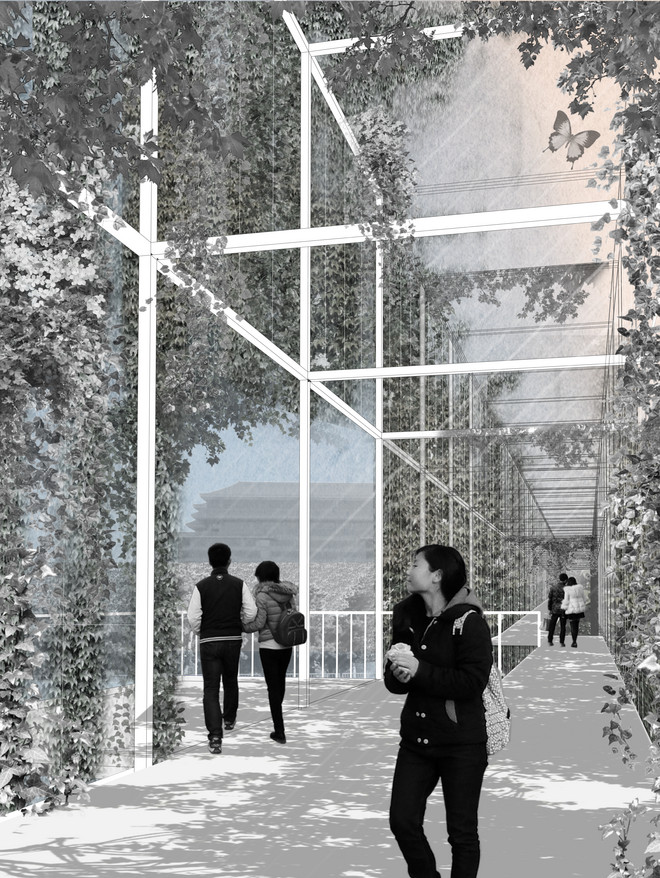
For further information or questions regarding this project, feel free to contact me through the contact details found underneath the profile photo at the start of the page.












